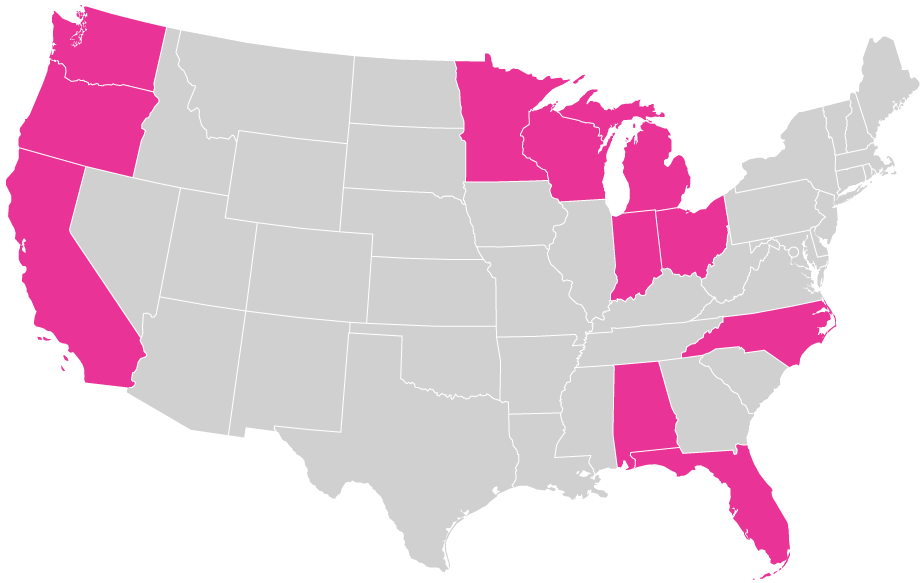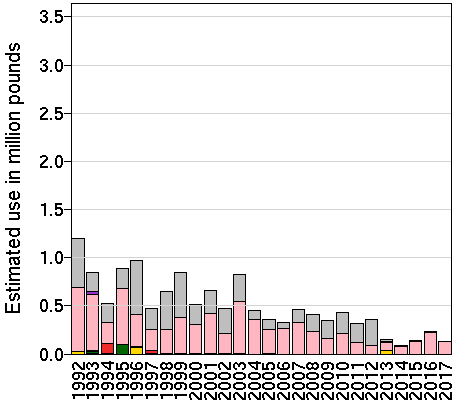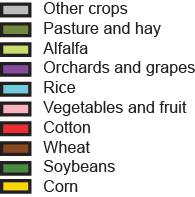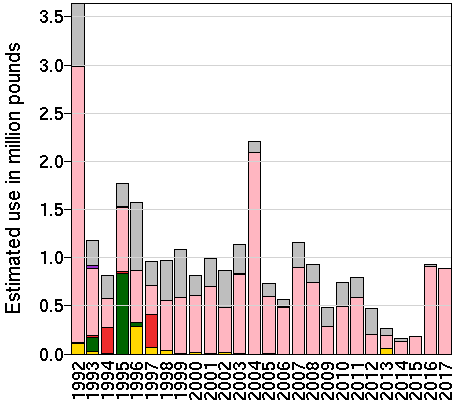Ethoprophos
ee-tho-pro-fos
High residues found on cilantro and sweet bell peppers. Registered as a U.S. pesticide in 1995. Reregistered in 2006. Currently under registration review.
Overview
Ethoprophos is used in 11 states.

Ethoprophos is used in California, Florida, Georgia, Indiana, Michigan, Minnesota, North Carolina, Ohio, Oregon, Washington, and Wisconsin.
Data is not available for Alaska, D.C., Hawaiʻi, and U.S. Territories. Data represents the most recent year available from USGS. Details.
See detailed maps of ethoprophos usage by state and county.
Human Health Effects
Even at low levels of exposure, ethoprophos can lead to serious negative health effects.
Cancer
Neurodevelopmental Harm
High Risk Exposure Routes
People are exposed to ethoprophos through food and drinking water, even if they don’t live near areas where pesticides are sprayed. Details.
High Residue Foods
Where residue levels of ethoprophos exceeded allowable limits or were not legally allowed to have residues.Details.
Cilantro
Sweet Bell Peppers
Registered Uses
Where EPA allows ethoprophos to be used.
Agricultural Crops: fruit and vegetables
Additional Information
Estimated Use of Ethoprophos on Crops
Most recent agricultural crop usage data as provided by the U.S. Geographical Survey’s Pesticide National Synthesis Project. Does not reflect universal usage of ethoprophos. (How do EPest-low and EPest-high differ?)
U.S. Tolerances Categories & Commodities for Ethoprophos
The U.S. EPA sets maximum residue limits — known as “tolerances” — on the amount of ethoprophos that may remain in and on foods. The tolerance is the residue level that triggers enforcement actions.
Tolerances have been set for ethoprophos for: Agricultural Commodities. Maximum residue limits have been set for ethoprophos by the U.S. EPA for the following commodities:
Beans
Cabbage
Cucumber
Hop
Pineapple
Spearmint
Sweet Potato
U.S. EPA Human Health Risk Assessments for Ethoprophos
Human Health Risk Assessments are conducted by the U.S. EPA to estimate the nature and probability of harmful health effects in people who may be exposed to pesticide. They are used to make informed decisions about approving new pesticides and new uses of registered pesticides, and during our regular review of existing pesticides. Read the assessment for ethoprophos.


